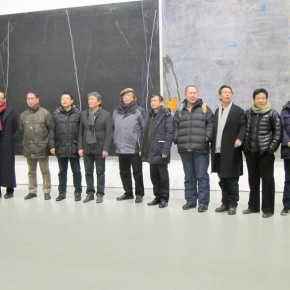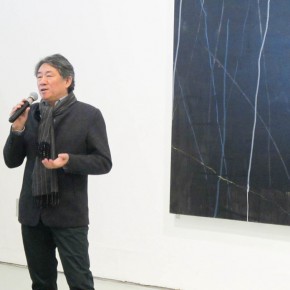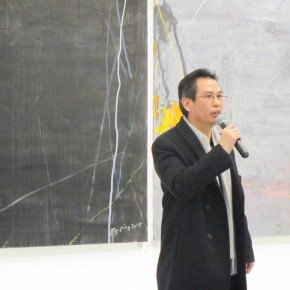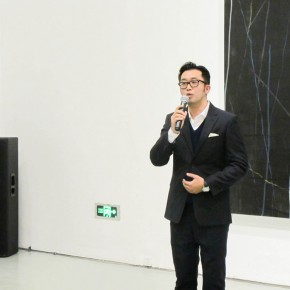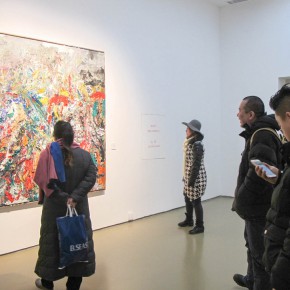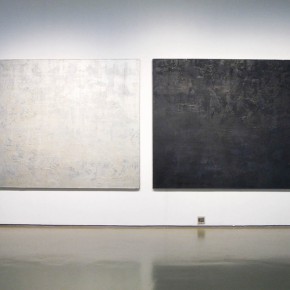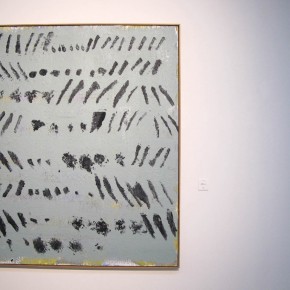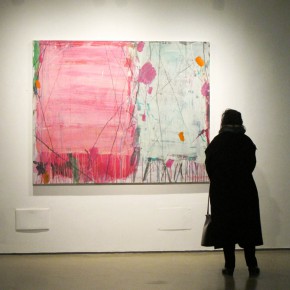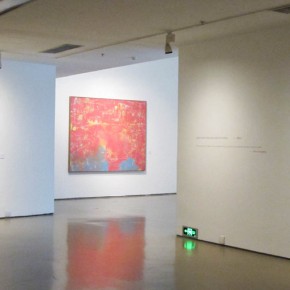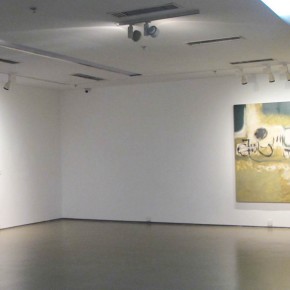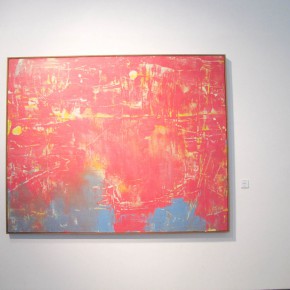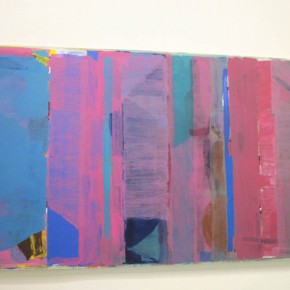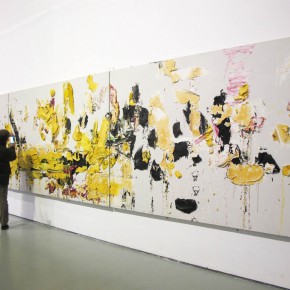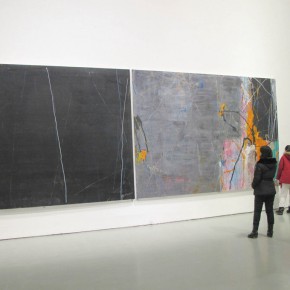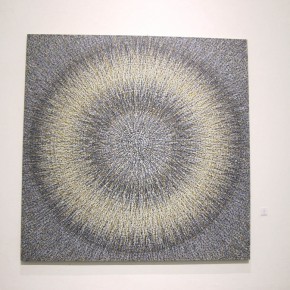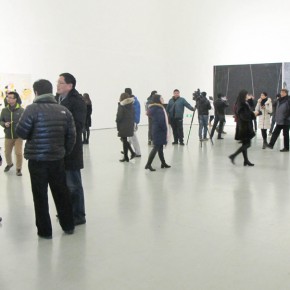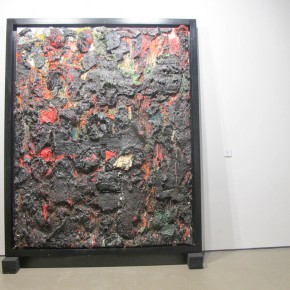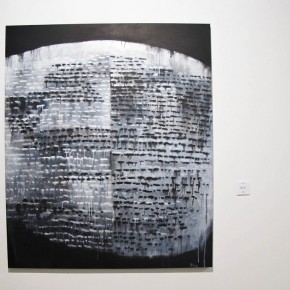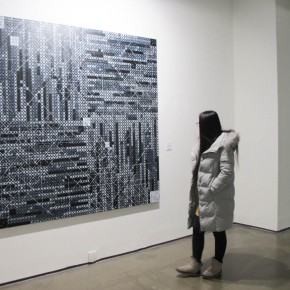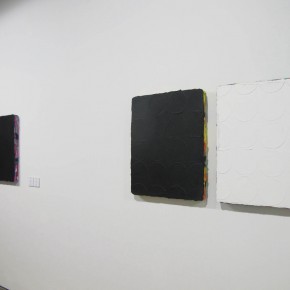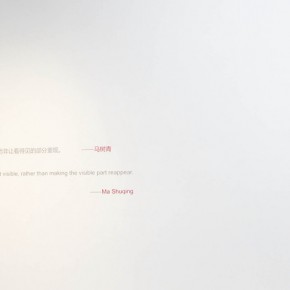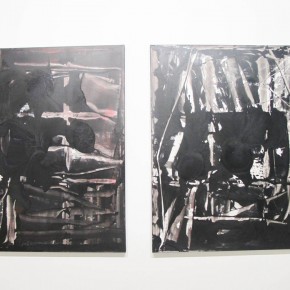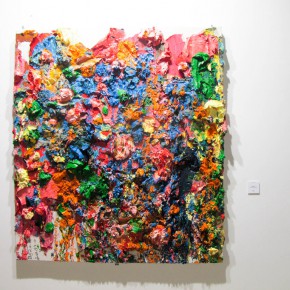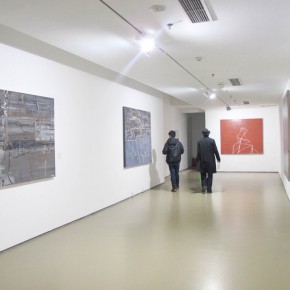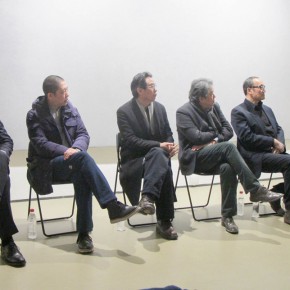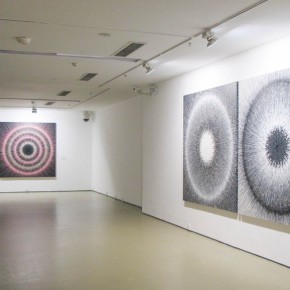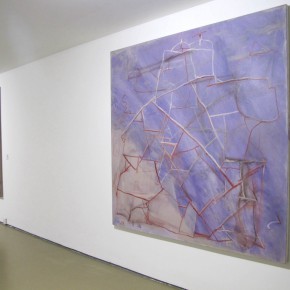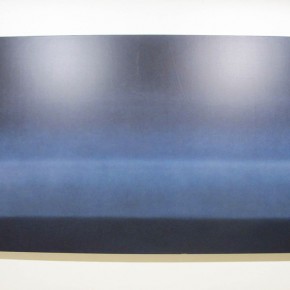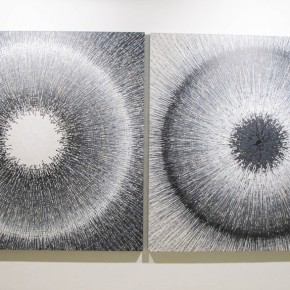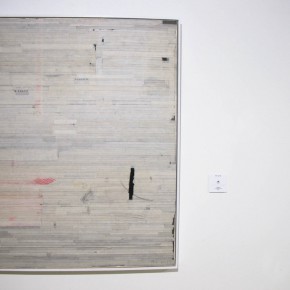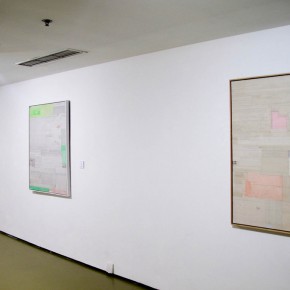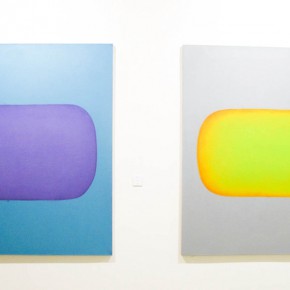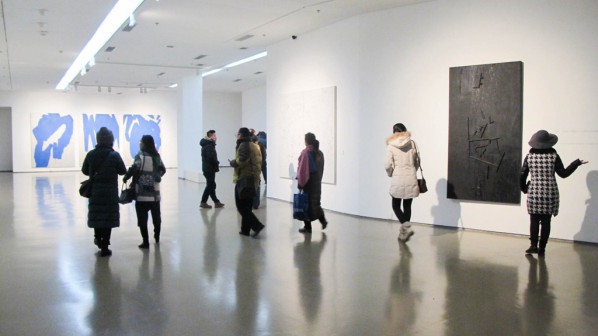
In the developing context of Western art, the use of Renaissance to express the spiritual pursuit of “humans”, the painting logic then expresses the true objective and narrative was gradually created, along with the high development of industrial civilization, the abstract art that is less narrative and of much spiritual expression emerged in the ontology of western art. It was much later when China really attempted abstract art, although some ancestors in the previous Republic of China, such as Wu Dayu had been involved in the field of abstract art, it only later became an entire trend of creation and study accompanied by the ’85 Art Movement, therefore, strictly speaking, the developmental history of abstract art in China is only thirty years old. Of course, it has heavily changed, the abstract art in China has not only attracted a large number of artists, but they also made a large number of artworks, and a group of artists continuously explore abstract art, which has received a great deal of attention both in the academic field and commercial field. And the more important thing is that abstract art has been associated with a modern Chinese lifestyle which has permeated into Chinese daily spiritual and cultural life.
After thirty years, it is necessary to review the history, at the same time the research and discussion on abstract art has to be deepened in a contemporary Chinese cultural context. On January, 24, 2016, “The Research Exhibition of Abstract Art in China” was inaugurated on the 2nd floor of Building No.1, in Today Art Museum. This exhibition was hosted by the Chinese National Academy of Arts and organized by the National Contemporary Art Research Center of the Chinese National Academy of Arts and Today Art Museum. It is the first large scale comprehensive abstract art exhibition organized by the national government agency as a periodic summary of the 30 years of Chinese abstract art, meanwhile it is also a promotional project of Chinese contemporary art guided by the Chinese Ministry of Culture and Chinese National Academy of Arts.
The whole exhibition project was organized by the National Contemporary Art Research Center and a Curatorial Committee was established. The members of the curatorial committee include director Wang Duanting, researcher of the Academy of Fine Arts, Chinese National Academy of Arts, Lao Zhu, professor of history and director of the Center for Visual Studies at Peking University, the famous curators Huang Du and Li Xu, and Prof. Peng Feng, vice dean of the School of Arts, Peking University. It features 81 works by sixteen artists, including Chen Ruobing, Ding Yi, Feng Lianghong, Jiang Dahai, Li Lei, Liang Quan, Ma Shuqing, Ma Kelu, Meng Luding, Tan Ping, Wang Chuan, Wang Yigang, Wang Huaiqing, Yu Youhan, Zhou Changjiang and Zhu Jinshi.
This exhibition is the collective appearance of Chinese abstract artistic elite, all who learned oil painting in the early years and have been continuously engaged in the exploration of abstract art for more than 20 years, each artist can become an individual case study, now they are assembled as a whole in order to form an overall observation of abstract art in China, to build a standard for the present confused field of abstract art, radically reforming. The Vice President of the Chinese National Academy of Arts and Director of the National Contemporary Art Research Center of Chinese National Academy of Arts Tan Ping talked about the exhibition that aimed at building a broader communication platform, offering conditions for everyone to discuss and research the development of Chinese contemporary art, while the selection of artists, exhibiting style and extension was open in form and it will also use different research perspectives to eventually form an overall understanding and research form of abstract art and forms the related research data of contemporary Chinese art.
If it is as a research exhibition of abstract art, what is the perspective and focus of the research? As a member of the curatorial organizing committee Huang Du said that the exhibition started the research from two aspects, firstly, research of the existing state of abstract art, secondly, the research of art history. Through the exhibition it is possible to explore where the academic nature and the aesthetic value of abstract art are and how to understand the relationship between abstract concept and modern daily life through Chinese culture, what is the ontological logic of the development of abstract art, the exhibition is a lively example. For abstract art, Li Xu called it the poetry in the literature and the jazz in the music, which was very spiritual and metaphysical, and it will not become popular because it is short of narrative features, but it is very important in academic research and it is for the elite. Lao Zhu said that abstract art was a new cultural form created after the approach, expressing the image, it was replaced by the technology along with the industrial progress, it focused on the fundamental thoughts on shape and it was the most directly manifested freedom of humans, the further extraction and analysis of the nature of the world.
The 30 years of development of Chinese abstract art does not only embody the level of creation and research, although it is not popular, the public increasingly accepts it, it was called the “story of the tail of the donkey” in the past, and the audience preferred to ask the artists on site “What do you want to express?”, but now they can make the judgment in a series of abstract art works. In order to expand the social influence of Chinese abstract art and improve the audience’s ability to understand and appreciate abstract art in our country, itinerant exhibition projects will be carried out in 2016. Special exhibitions and academic research from different perspectives and levels will be put forward during the itinerant exhibitions. At the same time, various academic activities and public educational lectures will be held and relevant achievements and materials will be compiled and published, in order to publish a comprehensive academic research material. The exhibition continues to March 13.
Text and photo by Zhang Wenzhi, translated by Chen Peihua and edited by Sue/CAFA ART INFO


